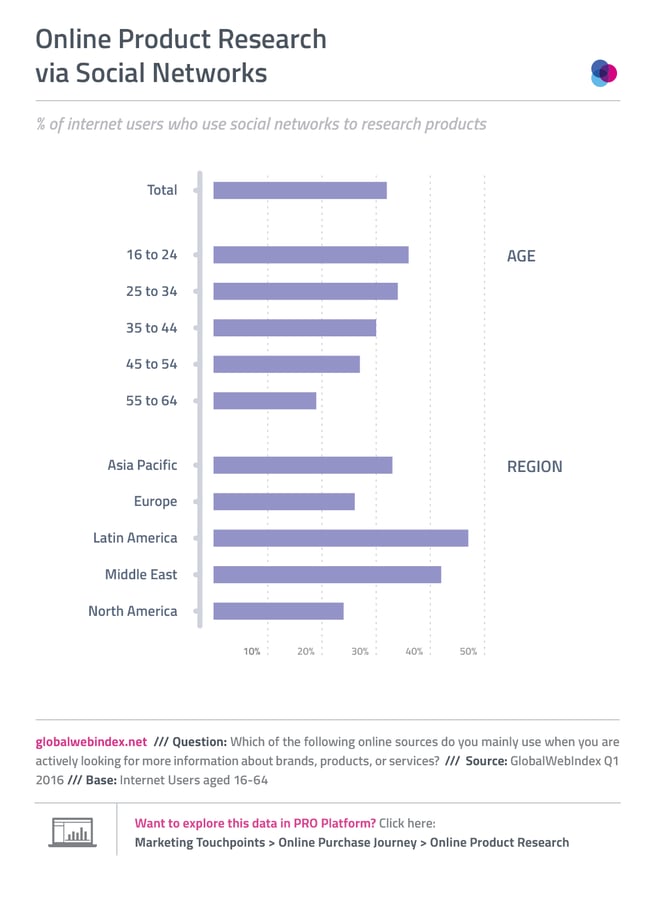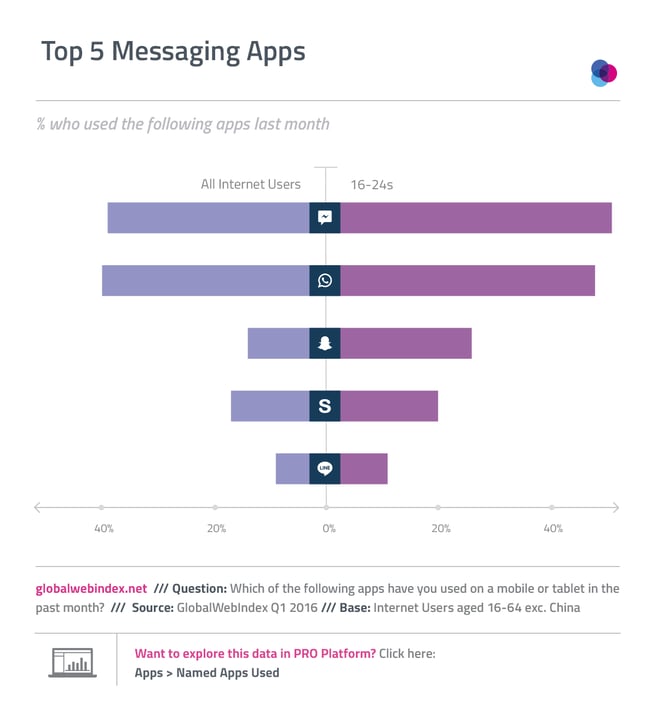Facebook’s big announcements last month surrounding chat bot functionality on Messenger caused a flurry of online discussion. When the biggest social network in the world throws its backing behind such a new development, the industry takes notice. But is the rise of chat bots a foregone conclusion, and will consumers engage with these bots in the ways that Zuckerberg & Co. are betting they will? GlobalWebIndex’s 34-market research gives some indication of why these new developments might be a hit with digital consumers.
1. Social media now 3rd most important product research channel
The increasing centrality of smartphones to the digital habits of internet users means that every aspect of the purchase journey is being influenced by mobiles – and, by extension, social media. GWI’s research shows when they are investigating products that they are thinking about purchasing, it’s 1 in 3 digital consumers who say they turn to social media for more information. This means that, globally, social media is now the third most important product research channel (being only 2 points behind consumer reviews).
2. 4 in 10 16-24s using social networks to research brands
As well as being a key point of product information now, it’s clear that social networks will become even more important in future quarters. If we zero in on the ever important 16-24 year-old age bracket, then we see that social networks are the second choice for these consumers when they are researching products (behind only search engines). For this age group, almost all of whom are habitual social networkers, social media has evolved from a platform to interact with friends to a major consumer-brand touchpoint.
3. Over 80% are now using messaging apps
With almost as many internet users using messaging apps as are social networking, the potential for these apps to develop into major product research channels, as social networks have, is obvious. We only need to look at WeChat to see this potential in action – large numbers of this Chinese chat app’s audience are already utilizing the platform to order goods and services, many via chat bot interactions. If they are deployed properly, and are presented as obviously beneficial to the user, there is little reason why the successes of WeChat’s functionality cannot be replicated across all messaging services.






